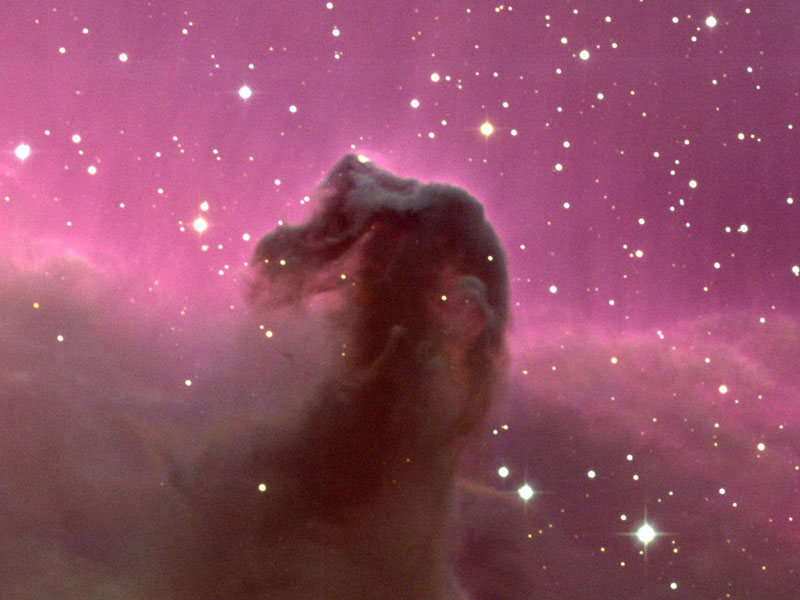|
Astronomy Picture of the Day Discover the cosmos! Each day a different image or photograph of our fascinating universe is featured, along with a brief explanation written by a professional astronomer. 2007 May 27
 Explanation: One of the most identifiable nebulae in the sky, the Horsehead Nebula in Orion, is part of a large, dark, molecular cloud. Also known as Barnard 33, the unusual shape was first discovered on a photographic plate in the late 1800s. The red glow originates from hydrogen gas predominantly behind the nebula, ionized by the nearby bright star Sigma Orionis. The darkness of the Horsehead is caused mostly by thick dust, although the lower part of the Horsehead's neck casts a shadow to the left. Streams of gas leaving the nebula are funneled by a strong magnetic field. Bright spots in the Horsehead Nebula's base are young stars just in the process of forming. Light takes about 1500 years to reach us from the Horsehead Nebula. The above image was taken with the 0.9-meter telescope at Kitt Peak National Observatory.
Tomorrow's picture: martian cave
解释:天空中最容易辨认的星云之一,猎户座的马头星云,是巨大而黑暗的分子云的一部分。亦称为巴纳德33,那一不同寻常的外形,最早发现于1800的一张照片上。红色的辉光来至于星云的背后,被附近的猎户座明亮的sigma星所电离。马头的黑暗是由许多很厚的尘埃造成的,虽然下部的马脖子左边上蒙上了一层阴影。一个强大的磁场使星云的气体都在离开星云。马头星云中的那些明亮的点都是一些正在形成的明亮恒星。光线需要1500年的时间才能从马头星云到达我们这里。上面的这幅照片是在基特峰国家天文台上用0.9米的望远镜拍的。
[ 本帖最后由 夜空 于 2007-5-27 21:22 编辑 ] |  |小黑屋|手机版|Archiver|Astronomy Forum of Starry Sky
( 浙ICP备16020121号 )
|小黑屋|手机版|Archiver|Astronomy Forum of Starry Sky
( 浙ICP备16020121号 )